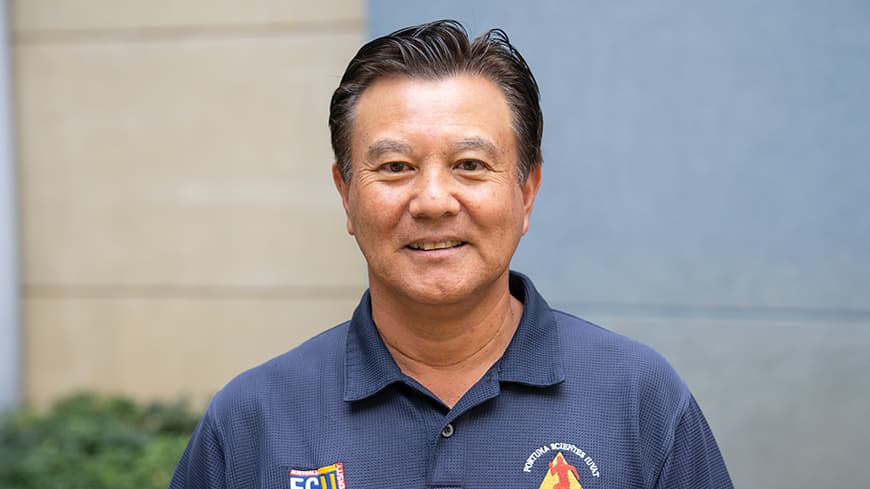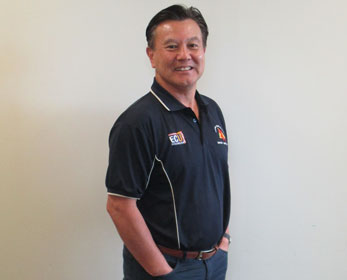Loss of muscle strength can be one of the most damaging outcomes when someone is unable to move a part of their body for a long period of time.
But a new Edith Cowan University (ECU) study may have found a way to offset or even protect against this — and it doesn’t even involve the affected body part at all.
Injury or illness may see a part of the body incapacitated for weeks or even months, causing unused muscles to weaken and lose their mass and strength, which can have a huge impact on people’s lives.
Lead researcher Professor Ken Nosaka noted it was already known gaining muscle strength in one limb due to resistance training will transfer to the same muscle on the opposite side of the body.
“This is known as the cross-education effect,” he said.
“However, the key aspect of this study is one particular type of muscle contraction proved most effective,” Professor Nosaka said.
The study
The research was a collaboration between ECU and Professor Trevor Chen from National Taiwan Normal University.
It saw 36 sedentary young men have their non-dominant arm immobilised by wearing a cast at their elbow joint for three weeks.
They were then split into three even groups: a concentric contraction group that lifted a dumbbell using the non-immobilised arm, an eccentric contraction group that lowered a dumbbell, and a control group that performed no exercises (see definitions below).
While their arm was immobilised, the concentric and eccentric groups had six weightlifting sessions twice a week, for three weeks.
These sessions would see them perform five sets of six dumbbell curls with a dumbbell corresponding to 20, 40, 40, 60, 60 and 80 per cent of their maximal strength over the six sessions.
Eccentric is best
When the cast was removed, the control group who did no exercises saw more than 15 per cent decreases in strength in the immobilised arm.
However, those who lifted weights saw little to no drop off in the immobilised arm’s muscle strength.
The concentric group saw muscle strength reduced to 4 per cent, but interestingly, muscle strength increased 4 per cent for the eccentric group, showing a stronger cross-education effect.

Researchers also measured the size of the muscle on the immobilised arm.
The control group saw muscle size decrease by around 12 per cent, whereas both concentric and eccentric muscle contractions with the opposing arm counteracted muscle atrophy in the immobilised arm.
Muscle size still decreased 4 per cent for the concentric group, while — remarkably — no decreases in muscle size were observed for the eccentric group.
Muscle damage protective effect
All participants were asked to perform 30 eccentric contractions with their immobilised arm once the cast was removed, with researchers measuring various muscle damage markers before, immediately following, and five days after the exercise.
The control group showed very severe muscle soreness and strength loss after the exercise, with the concentric group showing far less damage.
Again, the eccentric group saw the best results, providing a protective effect strong enough for peak muscle soreness to be reduced 80 per cent compared to the control group and 40 per cent of the concentric group.
Professor Nosaka said these results supported previous ECU research highlighting the benefits of eccentric exercise.
“We already know eccentric muscle contractions appear to be the most effective at promoting muscle strength and size gains — even in very small doses,” he said.
“It is important to investigate whether this latest study’s results are replicated for other muscles and whether eccentric resistance training is effective when dealing with immobilisation in real injuries, such as ligament sprains or tears, bone fracture, and post-surgery.
“However, healthcare providers can recommend resistance training — and eccentric contractions in particular — to minimise the negative effects of immobilisation and hopefully lessen its impact on people’s lives.”
‘Effects of unilateral eccentric versus concentric training of non-immobilize arm during immobilization’ was published in Medicine and Science in Sports and Exercise.
Definitions
There are three classifications of muscle contractions that relate to what the muscle is doing when being activated.
Concentric contraction- lifting the weight (muscle is shortening)
Eccentric contraction - lowering the weight (muscle is lengthening)
Isometric contraction - holding the weight parallel to the ground (muscle is stationary under load).
 It is possible to grow strength in an immobilised limb.
It is possible to grow strength in an immobilised limb.



